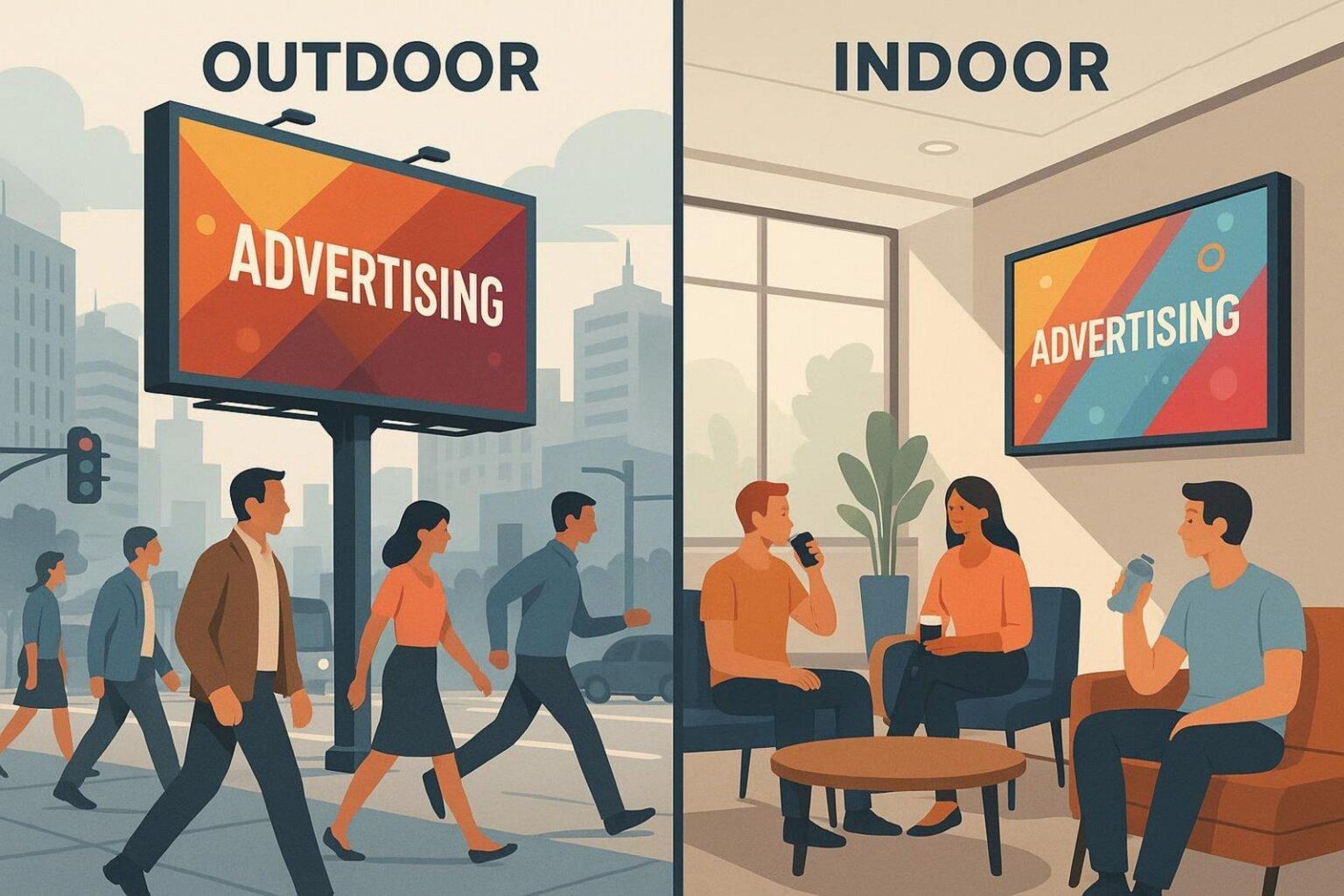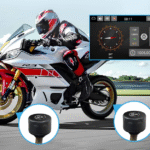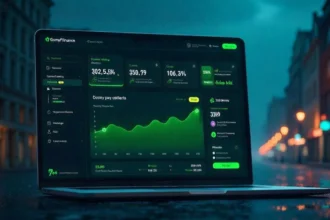As catching people’s attention becomes harder in today’s busy environment, indoor advertising has become a strong tool for businesses. It offers the chance to connect with audiences right where they spend most of their time-inside offices, shops, gyms, and waiting areas.
Indoor ads go beyond simply hanging a sign indoors; they use the unique surroundings in each venue to share messages that are direct and relevant. Unlike outdoor ads that may get little more than a passing glance, indoor ads often reach people when they are less distracted, making every moment a chance for brands to be noticed.
If you want to make your marketing more effective, working with an indoor advertising agency can help you get the best results from this method.
As people spend more time indoors, the value of indoor advertising continues to grow. Companies are noticing this change in behavior and using indoor spaces to reach the groups they care about most.
Whether it’s busy shopping centers or quiet medical offices, each indoor space allows businesses to share their story, boost interest, and motivate purchases. The goal is to stay relevant and remind customers about your brand during key moments in their daily routine.
How is Indoor Advertising Different from Outdoor Advertising?
The main difference between indoor and outdoor ads is the setting and the way people interact with them. Outdoor advertising, such as billboards or bus stop ads, aims to catch the eye of people on the move. This is great for spreading brand awareness, but the interactions are usually short and people may be distracted by other things like traffic.
Indoor ads, in comparison, reach people in controlled spaces where they spend more time. This could be while waiting for a doctor, exercising at the gym, or shopping. People in these locations are usually more willing to look at and think about ads.
Also, indoor ads are less likely to be damaged by weather or graffiti, which keeps them looking good for longer. This makes it possible to use more eye-catching designs or features that would not last outside.
Why Is Placement Important for Reaching the Right Audience?
Where you place your indoor ad plays a huge part in targeting the right audience. Indoor advertising naturally lets you select locations based on where specific types of people are likely to be. For example, to reach fitness fans, putting ads in gyms works well.
For luxury shoppers, advertising in high-end stores or hotels makes more sense than a general outdoor campaign.
This targeted approach means that brands can match their messages to the exact interests and habits of their ideal customers. By meeting people where they already gather, brands can make their promotions more effective and think up creative ways to get noticed. This kind of smart placement keeps your message in front of the right people at the right time.
Why Indoor Ads Are Important for Today’s Businesses
With so many advertisements competing for attention, indoor advertising has become an important piece of the modern marketing puzzle. The advantage is clear: indoor ads can grab people’s focus when they are most ready to listen.
Unlike the quick pace of most digital ads and the general nature of outdoor marketing, indoor ads have the chance to make a deeper impression.
The power of indoor advertising is backed by data. For example, Nielsen found that 70% of shoppers make their final purchase decisions while in the store.
The Outdoor Advertising Association of America also reports that indoor ads have a recall rate of 47%, compared to 32% for TV ads and 25% for online ads. This higher recall means indoor ads leave a strong impression, making them a powerful way to build brands and encourage action from potential customers.
Benefits of Indoor Advertising for Brands and Businesses
Indoor ads offer more than visibility-they support better communication, efficiency, and relationship-building with customers. By connecting with people where they spend time, brands can increase visits to their stores, boost website traffic, or encourage attendance at events.
Here are some key benefits:
- Reaching a Ready-to-Listen Audience: When people are inside-waiting for coffee, at the gym, or strolling through a mall-they naturally have more time and openness to look at ads. Indoors, ads are less likely to be ignored and messages are more likely to be remembered.
- Using Longer Attention Times: When people are standing in a line or waiting for an appointment, they’re paying more attention to their surroundings. Indoor digital displays make use of this by turning waiting time into brand exposure. This extra time can help get your message across and make it more memorable.
- Matching Messages to Locations: Indoor advertising allows for messaging that fits the setting. For example, food ads in office buildings at lunchtime or fashion promos in shopping centers. When the message matches the situation, people find it more useful, which leads to better results for businesses.
- Saving Money and Making a Bigger Impact: Indoor ads can often be more cost-friendly, especially since they reach a targeted crowd. For example, advertisers have seen a return of $6 for every $1 spent when using billboard-style indoor ads. Digital indoor ads can quickly be updated without printing new materials, which save money and keep promotions up to date.
Common Types and Places for Indoor Advertising
Indoor advertising comes in many forms so businesses can match their strategy to their goals and their audience.
The main options include:
| Type | Description | Main Locations |
| Digital Screens & DOOH | Electronic screens that change quickly, play videos or animations, and can update messages instantly. Programmatic tools target the ads to specific audiences with data and tracking. | Malls, airports, offices, gyms |
| Posters, Banners, Signage | Simple printed materials that never go out of style. Easy to produce and effective for steady, consistent messages. | Shops, community centers, sports arenas |
| Interactive Experiences | Displays that let people touch, play, or use features like AR (augmented reality). These get people more involved and help strengthen brand loyalty. | Stores, exhibitions, special events |
| Special Placements | Ads in unique spots like above urinals, behind bathroom doors, or across tables in restaurants for maximum visibility when people have little else to do. | Restaurants, restrooms, bars, cafes |
How to Find and Reach the Right Audience with Indoor Ads
One of the biggest strengths of indoor advertising is the ability to focus messages on the exact type of person who will care most.
Here’s how businesses can make their targeting smart and efficient:
- Knowing Your Audience: Before you start any campaign, find out who you want to reach. Go beyond age or gender-study their interests, habits, and routines. Tools like surveys, interviews, or analyzing past customer data can help you define your audience.
- Matching Messages to the Venues: Change your messaging to fit the location and moment. For example, a restaurant may promote breakfast deals in office buildings early in the morning. The more the message fits the place and time, the more likely people will care.
- Using Data and Technology: Modern indoor ads can collect and analyze data, tracking things like how often an ad is noticed, how many people scan a QR code, or whether a promotion drives sales. This helps businesses see what’s working and adjust their approach for better results.
How to Make Indoor Ads That Stand Out
Good indoor ads do more than just sit on a wall-they need to grab attention quickly and communicate clearly.
Here are some simple ways to help your ad get noticed:
- Great Design: Use bright colors, sharp images, and simple graphics that pop. In a busy indoor space, bold designs are more likely to stand out than muted ones.
- Clear Message: Keep text short and direct. Focus on one main idea or offer that you want people to remember. Make sure the message is easy to understand at a glance.
- Strong Branding: Always show your logo, brand colors, and key visuals in a way that’s easy to spot. Try to be consistent so people recognize your ads across different channels.
- Encourage Action: Give people a reason to do something right away-like scanning a QR code, visiting a website, or taking part in a promo. Make it simple for them to respond, even in a small space.
Tips for a Successful Indoor Advertising Campaign
Want your indoor ads to deliver the best results? Here are some practical steps to follow:
- Link Indoor Ads to Your Digital Campaigns: Use indoor ads to push people toward your social media, website, or special online challenges. QR codes or unique URLs work especially well to create a connection between physical and digital marketing.
- Adjust Messages for Each Location: Don’t use the same ad everywhere. Think about what people in each place are doing and tailor your message to fit. Short messages for busy areas, longer ones for places with more waiting time.
- Use Dynamic, Real-Time Content: Digital screens let you change promotions instantly-think daily specials in a restaurant or weather-related deals. This keeps content fresh and timely, helping you respond quickly to customer needs or outside trends.
How to Track the Impact of Your Indoor Ads
It’s important to measure if your indoor ads are working. Here’s how you can do it:
| What to Measure | How to Measure |
| Impressions (How many times the ad is seen) | Screen analytics, foot traffic counters |
| Engagement (If people interact with the ad) | Clicks, QR code scans, landing page visits |
| Sales Impact | Check if products or services being advertised sell more while the ad is running |
| Brand Recall | Ask customers how they heard about your business or products (customer surveys) |
For accurate results, use clear call-to-actions or unique discount codes in your ads. Technologies like geofencing can track if people visit your store after seeing your ad in a nearby location.
Also, mix digital tracking with old-fashioned methods like surveys to get a well-rounded view.
New Trends and What’s Next for Indoor Ads
Indoor advertising continues to change, with new tools and ideas shaping how brands connect with people.
Here’s what’s happening now and what’s likely ahead:
- Automated, Real-Time Ad Buying: Programmatic platforms let businesses buy ad space and change content automatically, based on data like time of day or audience trends. This saves time and makes the whole process more efficient.
- Eco-Friendly Practices: Brands are turning to digital screens that use less power and print ads using recycled or biodegradable materials. Running ads in a green way can help build customer trust and loyalty.
- Better Audience Tools: Technology like sensors, eye-tracking, and facial analysis (without identifying individuals) helps brands understand how people respond to ads. This leads to improved targeting and design for future campaigns.
- Immersive, Interactive Content: Augmented reality and interactive displays give customers hands-on experiences with products or brands-like trying out furniture virtually or playing branded games. These tools help people remember your ad and connect with your message on a deeper level.
Indoor advertising is growing and changing, helping brands make stronger connections with customers. With the right approach, it offers a smart way for businesses of all sizes to get ahead.

















